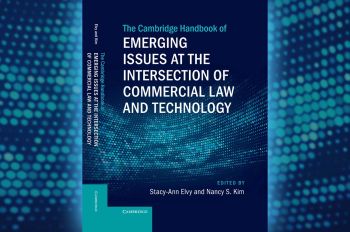Research Revolutionizes Monte Carlo Methods with Machine Learning Approach

A research team that includes Nathan Kirk, applied mathematics senior research associate at Illinois Institute of Technology, has developed a groundbreaking approach that implements a machine learning approach to generate more evenly distributed data point sets to make estimations more precise through quasi-Monte Carlo methods.
“Message-Passing Monte Carlo: Generating Low-Discrepancy Point Sets Via Graph Neural Networks,” published in Proceedings of the National Academy of Sciences, shows how Message-Passing Monte Carlo (MPMC) methods holds promise for enhancing efficiency in fields such as scientific computing, computer vision, machine learning, and simulation.
“Imagine a large, perfectly square lake,” Kirk says. “One morning, 10 fishing boats head out onto the water. If the fishermen do not coordinate and randomly choose their positions on the lake, they might run into problems. Some boats may end up too close together, competing for the same fish, while other areas of the lake could remain completely unfished. However, if the fishermen communicate and plan their positions strategically, they could cover the lake uniformly, maximizing their chances of catching the most fish and ensuring an efficient spread across the water.”
MPMC works in a similar way, by generating “low-discrepancy point sets” that are designed to uniformly and efficiently fill a unit hypercube. It does this through graph neural networks (GNN), which excel at capturing the relationships and dependencies between points in a graph structure.
“The goal is to generate point distributions that minimize the irregularity across a space,” Kirk says. “Intuitively, when paired with the ‘message-passing’ algorithm, the GNN can learn complex interactions among points and optimize their positions by letting the points ‘talk’ to one another, collectively deciding their next move and achieving far better uniformity than previous methods.”
The paper shows MPMC points achieve improvement over previous low-discrepancy methods when applied to a computational finance problem, achieving at best a 25-fold improvement when estimating the price of a financial derivative. Kirk’s co-authors, T. Konstantin Rusch, postdoctoral researcher, and Daniela Rus, Andrew (1956) and Erna Viterbi Professor of Electrical Engineering and Computer Science, both from Massachusetts Institute of Technology, along with their collaborators, have also shown that MPMC applied to a real-world robotics motion planning problem gives a four-fold increase in efficiency.
“One big challenge of using the GNNs and [artificial intelligence] methodologies is that the standard uniformity measure, called the ‘star-discrepancy,’ is very slow to compute, which is then not suited to machine learning algorithms,” Kirk says. “To solve this, we switched to a more flexible uniformity measure called L2-discrepancy. For high-dimensional problems, even this method isn’t enough to solve the problem, so we use a novel technique that emphasizes the important interactions of the points. This way, point sets are created that are better suited for specific problems-at-hand, or ‘custom-made’ point sets for your specific application.”
MPMC holds promise to provide improvements in many applications. For example, in computer graphics, MPMC can enhance rendering techniques by improving light simulation and texture mapping. In simulations, it can lead to more precise approximations of complex systems with fewer samples. The improved uniformity of MPMC could lead to more efficient robotic navigation and real-time adaptations for things such as autonomous driving or drone technology.
“The most exciting aspect about this project for me was the merging of two personal academic interests, Monte Carlo methods and machine learning,” Kirk says. “MPMC is the first machine learning approach to generate low-discrepancy point sets to be implemented in quasi-Monte Carlo methods, and makes a significant contribution to the field.”




